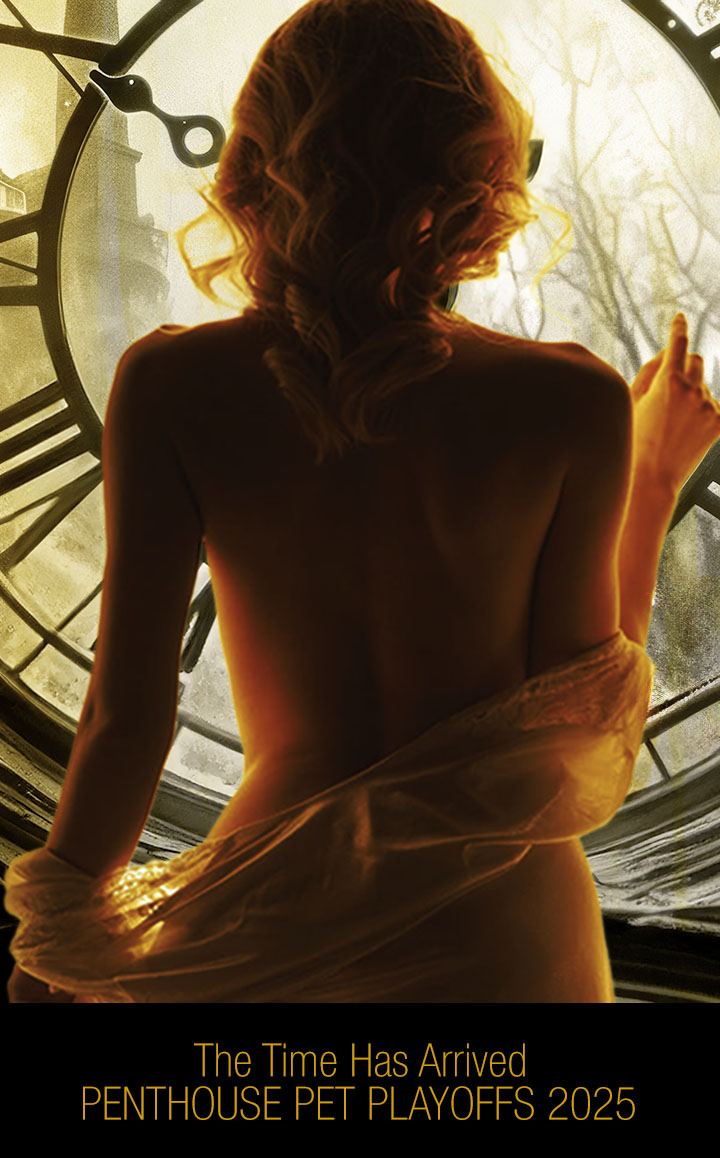For those of us with more, ahem, discerning ears, film scoring — the instrumental music written to enhance a story’s drama — can make or break a production. Ideally, it’s a thing of beauty that transports us, conveying emotions the images cannot. In reality, it can be an unrelenting assault on the senses, or overly dramatic schmaltz that offends our intelligence.
But not when it’s the work of L.A.-based film composer Craig Wedren.
“I always look at the music as the final character — this ghost that floats through,” says Wedren. “You’re not aware of it, you don’t know why you’re thinking or feeling the way you are, and this is frequently because of this all-important, nonverbal final character.”
Wedren’s composing style is versatile by nature — after all, pros have to adapt to each project and whatever music is required. But what catches our ear every time are his more languid, atmospheric scores, which is unexpected for someone who started out in D.C.’s legendary Dischord Records scene, fronting the post-punk band Shudder to Think (think Fugazi-type hardcore, but with Wedren’s dreamy, operatic pipes). But as the band achieved major-label status in the 1990s, touring with groups like Smashing Pumpkins and Pavement, Wedren’s interests began to drift toward film scoring, and in 1997, he and his bandmates hit the mother lode: writing and performing songs for Todd Haynes’ glam-rock opus, Velvet Goldmine, and composing scores for Jesse Peretz’s adaptation of Ian McEwan’s First Love, Last Rites, and Lisa Cholodenko’s debut feature, High Art.
Shudder to Think eventually disbanded, but Wedren’s newfound career took off. Twenty years later, this professional film composer has a résumé full of winners, including David Wain’s Wet Hot American Summer and Richard Linklater’s School of Rock, along with an impressive list of TV credits, like Hung, Reno 911!, and The United States of Tara. In 2017, Wedren and Pink Ape — the name of his studio as well as his soundtrack “collective” of musician and composer friends — created the score for the hit Netflix series GLOW, and he also released an electro-acoustic solo record, his first since 2011, titled Adult Desire.
We had the pleasure of chatting with the very busy Wedren, who just turned 49, while he was on vacation with his extended family — wife, children, parents, in-laws — in coastal Maine. In honor of our interview, he jokes, “Everyone is walking around topless with cocktails.” Huzzah!
Let’s start with the movies you watched growing up.
Up until my junior year in high school, I lived in Cleveland, which was this cultural catchall, so anything my friends and I could get we absorbed. We were late-70s/early-80s boys, so it was Corvette Summer, Star Wars, and Caddyshack, and as we got older our tastes got weirder and artier, like Cat People and Liquid Sky.
Did you pay any attention to the music?
I don’t know if I was aware of movie music as a separate thing, but I was obsessed with the Saturday Night Fever soundtrack. My big introduction to punk and new wave was the soundtrack to Times Square, which had songs by the Cure, Patti Smith, XTC, and all the bands that would feed into Shudder to Think, my own output, and eventually my film stuff — the more atmospheric background music. I don’t know that my friends and I were conscious of it, but what was embedded most deeply into our aesthetic DNA was music and movies.
You’re still involved with your Cleveland friends, right?
I grew up with David Wain, who directed Wet Hot American Summer, and Stuart Blumberg, who directed Thanks for Sharing and has written a lot of different movies [including Lisa Cholodenko’s The Kids Are All Right]. We were the Three Musketeers. We had bands together and we made videos and there were skits in David’s basement and a little recording studio, so we were always generating this material. Then David and I went to NYU and he joined this sketch-comedy group that became The State.
This was the late 80s and I was already in Shudder to Think, and all of The State guys were in film school. I was listening to a lot of Brian Eno, Arvo Pärt, and different composers that fell somewhere between the kind of post-punk/new wave/ambient/4AD stuff [Cocteau Twins, Pixies] that was going on then and, like, cinematic classical background music. So when I wasn’t doing Shudder, I was doing sound design for theater, making music for student films, or just recording experimental stuff, high with friends, on my little 4-track. It was a very natural, unconscious foray into what would become, essentially, film-score music.
The first movie I saw that Shudder to Think scored was Lisa Cholodenko’s High Art, in 1998. How did that project come about?
Lisa was editing the film at Post 391 in New York — the same facility as Todd Haynes, who directed Velvet Goldmine [for which Shudder to Think wrote two songs] — and somebody mentioned us to her. She was like, Who are these poser/wannabe queer/straight boys trying to make film music? At first she was skeptical, but I watched a rough cut of the film and I had a vision. I knew exactly what the score needed to be. So I created a demo using wine glasses as the instrument. I gave her a DAT tape and it worked really well with the material.
Do you get a cut of the film you’re working on and then figure out the music, or are you involved earlier in the process?
It depends. Frequently, producers and filmmakers are so overwhelmed keeping track of a thousand different elements of production that they don’t think about the music until the very last second. Then you get a cut of a movie or TV show dropped into your lap with a hodgepodge of music they’ve grabbed from different scores and sources, and you go from there.
The flip side of that is, for instance, this movie I just did with Ken Marino, Dog Days, where there’s a band in the story, so we had to figure out what this band sounded like. I recorded a bunch of music way beforehand that they could play along to on set. We also knew that there had to be a centerpiece — it’s a romantic comedy, so there needed to be that kind of classic love song for the montage in the middle. That was one of the first things that got written so [Ken] was able to play it for the actors and get everyone on the same page — melodically, atmospherically, and thematically.
In the case of High Art, I think Lisa cut the entire movie together without any temp music. Most editors will “temp” the film — which is to say grab music from wherever — while they’re editing. Which makes sense, because technologically you have access to everything. But there are some old-school filmmakers who believe that you should cut the film so it plays well dry, before adding any music.
Do you have a preference?
I used to like to have things completely dry so I could come to it with fresh ears, but now I like knowing a director’s tastes and what they’re thinking. I don’t mind having temp music to put me in the ballpark, but if they’re too attached to it then it can become a drag — this is called “temp love,” and it can take the wind out of one’s creative sails.
Temp music is also good because sometimes I like to take apart another composer’s work. Like, Let’s see, how did John Williams make this piece of music? For Reno 911! Miami, there were a lot of big, classic scores temped in — Jurassic Park and God knows what else. I had only done smaller indie films at this point, so I was like, Okay, I’m gonna get my crash course in big Hollywood film scoring. I didn’t go to school for this, I just kind of bushwhacked my way through. So that was really cool.
You scored the Netflix series GLOW, which has gotten great reviews. It’s definitely a weird concept — women’s wrestling in the 1980s. Did you think it would be this good?
I knew from the people involved that it was going to be a highly creative, intelligent, and fun project. Jesse Peretz, one of the executive producers, actually directed the very first movie that Shudder to Think scored, First Love, Last Rites. He was a friend of mine in the 90s, so we have a long history together. Then, Jenji Kohan, who created Orange is the New Black, was another executive producer. I know her through friends in L.A., and she’s amazing and smart and she doesn’t make bullshit.
I love your use of cheesy synth music — it really feels like the 1980s, not some greatest-hits rehash of that decade.
I remember GLOW when it was on [1986-89], and I was like, What the fuck is this? Before reading the Netflix script, I watched the documentary [Brett Whitcomb’s GLOW: The Story of the Gorgeous Ladies of Wrestling], and it had this amazing sub-hair metal music in it. Then when I read the script, it reminded me of Wang Chung’s score for To Live and Die in L.A. — off the beaten path, and maybe a little lower budget than some of the more “designer” brand synth scores of the era, like [Giorgio] Moroder, Tangerine Dream, and Vangelis.
So we came up with what I would call “off-brand” music [laughs].
What you describe makes me think of John Carpenter’s Escape From New York, where the director scored and played half the instruments himself.
I love that movie. Now that’s low-rent. It’s almost like the band Suicide, which was this rickety-ass synth-punk duo from the 70s — two chords, really creaky and trashy. But it turns out they were the foundation for half the indie music that’s been made in the twenty-first century. And I feel like John Carpenter’s scores are like that. At the time, we were like, Did he make this on a tin can? It was just so primitive. But now, if you watch something like Stranger Things, anyone who’s making a weird synth score owes a debt to John Carpenter.
Speaking of Stranger Things, how do you feel about all the punk/alternative music we listened to growing up now being used in all these mainstream movies, TV shows, and commercials?
I’m of two minds about it. On one hand, if the musicians are still alive to enjoy the spoils, I certainly understand, because it’s really hard to make a living making the music that you want to make. For better or worse, that’s one of the only games left in town — licensing for a movie or a commercial or a TV show. On the other hand, sometimes it’s utterly ridiculous.
I remember hearing a Buzzcocks song in some commercial, and I was like, What the fuck? The world doesn’t make any sense! There’s this duality to it. There was this precious, secret music that was our little coven, but we also felt like: This should be the big music! You can’t have it both ways. And of course it was the weirdos who ended up in creative jobs, like music supervisors, writers, directors, so inevitably you have these former freaks behind the controls of commercial output. So it makes sense that our peers making these commercials are like, I love the Buzzcocks, let’s put them in.
Then there’s the other phenomenon of the internet, which turns over every rock from the twentieth century, making all this stuff equally available to anyone. So this whole notion of our secret, sacred music is erased from the familiar categories we grew up with. With Shudder to Think, ours was beautiful music, but it was aggressively challenging at times. We wanted to be as big as Van Halen — that was our utopia. I don’t know that we wouldn’t have been disappointed had that happened, because there’s a whole lot of weirdness that comes from popularity and commercialization, but that was what we hoped for.
To learn more about Craig Wedren or to stream Adult Desire, go to craigwedren.com




















